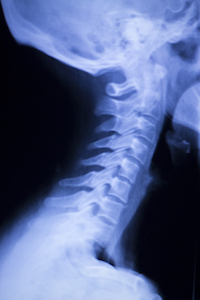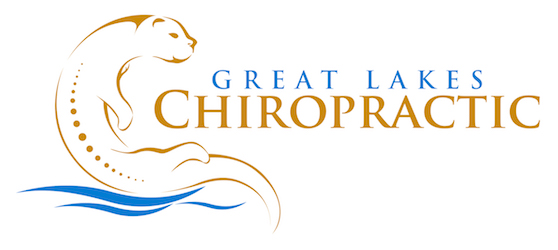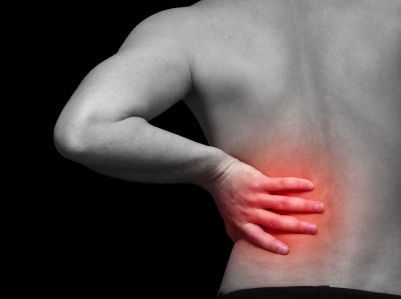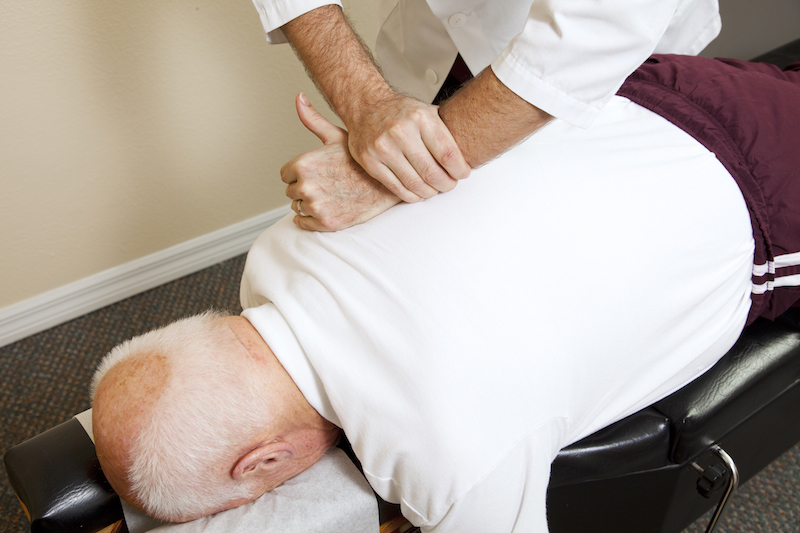
Can a Chiropractor Help Arthritis?
Chiropractors are thought to be the frontline providers of relief from back pain, but they really are healthcare professionals who care for and treat the entire body. It’s true that Chiropractors adjust the spine, but they also use varying degrees of care and techniques to adjust misaligned joints and provide a holistic approach the relief of arthritis.
 Arthritis is a condition that will often rear it’s painful head as we age. Millions of people are affected by arthritis. With no sign of a cure in sight, treatments by Chiropractors can help manage the chronic pain associated with this condition.
Arthritis is a condition that will often rear it’s painful head as we age. Millions of people are affected by arthritis. With no sign of a cure in sight, treatments by Chiropractors can help manage the chronic pain associated with this condition.
The main symptoms are chronic joint pain, stiffness, swelling, and can eventually lead to a significant reduction in movement causing disability.
Rheumatoid Arthritis
Some forms of arthritis, like rheumatoid arthritis can be characterized by periods of activity and remission. During the active phase, the focus is on suppressing the inflammatory process through diet, relaxation, and pharmaceutical help if required. In the remission phase, the focus remains on the maintenance of joint function.
During the remission phase, Chiropractic care can help by:
- Helping to improve the range of motion
- Improve flexibility and endurance
- Increase muscle tone and strength
- Provide diet and nutritional advice and supplements to aid in decreasing inflammation
Osteoarthritis
Osteoarthritis is a condition that is slightly more stable, but does become progressively worse over time. Most commonly it is the hips, knees, and spine that are affected – and it is your chiropractor that can help with pain management so you can remain functional for as long as possible. Chiropractors come with a great degree of knowledge in strategies and management of osteoarthritis.
With the assistance of your family doctor, a Chiropractor may treat osteoarthritis with:
- Chiropractic adjustments
- ultrasound therapy
- electric muscle stimulation (EMS)
- laser therapy
Early Diagnosis is Imperative
Beginning treatment as early as possible is the key to receiving the best outcome, since arthritis just gets progressively worse over time. The treatment you will receive will be preventative, meaning it will be focussed on reducing further damage to your joints and pain. The inflammation related to arthritis conditions can be quite damaging to joints and the soft tissue in your body, so developing a team of health care professionals, a plan, and beginning treatment will directly affect you prognosis.
Ultimately, We Too Wish You Didn’t Have An Arthritis Diagnosis
There are many other forms of arthritis that can be helped by a Chiropractor. An arthritis diagnosis can be scary, the thought of long term chronic pain is something no one wants to have to suffer with. Fortunately the progression of this condition can be stalled with adequate and immediate care – significantly improving your quality of life.
Calf Strain. Can Your Chiropractor Help?
If you have ever torn the fibers in your calf, you know how painful it can be. The older you get, the more susceptible you are to tears and injuries from your weekend workouts and athletic activities.
How Do I Know I’ve Torn a Muscle?
You’ll know if you have heard a “pop” while pushing off that leg during an activity – followed by a sharp pain and some swelling or bruising. This particular calf strain is graded by the amount of torn fibers.
The severity of the sprain will fall into one of three categories:
Grade 1 (mild) – Few muscle fibers have been injured. You may not feel pain until the following day, and would usually be during or after an activity that would instigate a pain response. You’d still have strength and range of motion, and there isn’t usually and swelling or bruising.
Grade 2 (moderate) – A large number of strains fall between a grade 1 and 2. With a grade 2 strain, there are many muscle fibers that have been torn which has lead to a decrease in your range of motion, swelling, pain, and bruising.
Grade 3 (severe) – All of the fibers of the calf muscle are torn, meaning there is noticeable damage. There is likely severe swelling, pain, and bruising. There is limited mobility, and the range of motion is severely limited as a result of the pain.
Immediate Treatment
This should consist of the PRICE protocol, similar to RICE, but the P is for protection, R rest, I ice, C compression, E elevation. This should be followed until the swelling goes down, and while your body heals. Ensure you are resting, drinking water, standing, and NO high heels!
While this takes place while determining a treatment plan that includes the assistance of a chiropractor. This rehabilitation plan will consist of strengthening, stretching, and adjustments to prevent future tears of the calf muscles that could lead to plantar fasciitis, Achilles strains, or hamstring strains.
Rehabilitation is the Key
The importance of proper rehabilitation for your calf strain can’t be emphasized enough, because failure to do so will cause your calf to heal tighter and with more weak points which will lead to further injury. In addition, a massage can be beneficial immediately after the injury (not at the actual sight of the tear though!) to lengthen the entire posterior chain while increasing the circulation.
Begin with non weight bearing stretches once the swelling has decreased, and if your body is tolerating that well for a few days, then you can move onto weight bearing stretches. The severity of the injury, how much time passed before you sought treatment, along with your body’s ability to heal will determine how quickly you will be able to resume your regular activities.
Ask Us
If you are experiencing what you think may be a calf strain, talk to your chiropractor about beginning treatment before it’s too late and you have prolonged the healing process.
Exercise and Chiropractic Care
With the exception of those with heart problems – combining exercise, nutrition and your chiropractic care is the best way to get the results you have been looking for. And without getting carried away, this is not about becoming an athlete – it’s simply about getting your body moving more regularly. Taking care of your body not only requires seeking out healthcare professionals to help you improve, but it requires your commitment to yourself along with your willingness to follow a new routine – which may include exercise.
Exercise
There are years worth of studies and evidence to support the fact that light to moderate exercise is just as important as adjustments, stretching, and nutrition. For example, when treating lower back pain – strengthening the abdominal muscles will support your lower back resulting in a decrease in pain.
The addition of aerobic exercise will help to promote proper digestion while improving circulation. This can be as little as a walk around the block daily, to cycling or running. The resulting toning, fat burning, and weight loss are essential components to pain relief overall.
Chiropractic Care
Chiropractic care will bring pain relief once the spine is aligned properly. You can expect a reduction in pain in your neck, back, hips, joints, along with other parts of your body that could be affected by a misalignment. Improvement in headaches, digestion, energy, and immunity are also an expectation of chiropractic treatment.
When Exercise and Chiropractic Care are Mixed
 With both being maintenance routines, they will work well together. Between pain relief and an overall improvement in strength, you will find yourself feeling and looking better. In addition, you will have a decreased risk of developing diseases or additional pain in your joints or back.
With both being maintenance routines, they will work well together. Between pain relief and an overall improvement in strength, you will find yourself feeling and looking better. In addition, you will have a decreased risk of developing diseases or additional pain in your joints or back.
The overall sense of well being should be your motivation to continue with your routine, creating lifelong healthier habits.
A Holistic Approach
Working with a Chiropractor is a journey you will have to take alongside other healthcare modalities. The use of adjustments alone to ease pain can bring some relief, but when adjustments are used alongside exercise (and nutrition), you’ll find a difference you wouldn’t otherwise notice without it.
Safe and Effective Care
Chiropractic care can be the safest route to go when you are looking for pain relief that is free of medication and stress. The biggest reason people often don’t make the initial first step is because they are unsure of what to expect. The expertise of your Chiropractor will put your questions at ease, and give you the confidence you need to move forward towards a pain free future.
If you haven’t reached out yet, give us a call and book a visit to get a clear understanding of how they can help you and your individual needs.



 The introduction of computers has simplified our lives on many levels but has taken a toll on our physicality.
The introduction of computers has simplified our lives on many levels but has taken a toll on our physicality.  Maintain some level of physical activity
Maintain some level of physical activity
 When you suffer from poor posture, don’t get quality sleep, eat processed foods, and don’t get exercise, everything starts to fall apart. You end up feeling tired all of the time, your digestion is poor, and you end up with body pains. It’s important to build a strong foundation for your health so that you can enjoy your whole life rather than just bits and pieces.
When you suffer from poor posture, don’t get quality sleep, eat processed foods, and don’t get exercise, everything starts to fall apart. You end up feeling tired all of the time, your digestion is poor, and you end up with body pains. It’s important to build a strong foundation for your health so that you can enjoy your whole life rather than just bits and pieces.  While there are a few options for sciatica such as medications and surgery, many are seeking alternative options that are less intrusive. Chiropractic care, for instance, has an extensive library of studies showing it’s effectiveness in reducing sciatica pain.
While there are a few options for sciatica such as medications and surgery, many are seeking alternative options that are less intrusive. Chiropractic care, for instance, has an extensive library of studies showing it’s effectiveness in reducing sciatica pain. 
 Have you ever thought about what sugar is doing to your health? Everyone likes the occasional sweet indulgence, but excess sugar can have an impact on your overall health. In addition to weight gain, you could experience tooth decay, an imbalance in your blood sugar levels, inflammation, and much more.
Have you ever thought about what sugar is doing to your health? Everyone likes the occasional sweet indulgence, but excess sugar can have an impact on your overall health. In addition to weight gain, you could experience tooth decay, an imbalance in your blood sugar levels, inflammation, and much more.  It’s a common condition with more people getting diagnosed every year and being one of the most common surgeries performed here in North America. Common symptoms of CTS of tingling, burning, and numbness make it difficult to function on a daily basis, and you may even find that it’s a challenge to properly grasp things. While surgery and other treatments are available, chiropractic care may actually be the best non-invasive option. Take a look at what it can do for you.
It’s a common condition with more people getting diagnosed every year and being one of the most common surgeries performed here in North America. Common symptoms of CTS of tingling, burning, and numbness make it difficult to function on a daily basis, and you may even find that it’s a challenge to properly grasp things. While surgery and other treatments are available, chiropractic care may actually be the best non-invasive option. Take a look at what it can do for you.  When you have pain in the area, it’s sometimes referred to as “tennis elbow” or “golfer’s elbow;” but, what are these different elbow injuries and why does the area get injured easily? Take a look below to better understand your elbow pain and what’s causing it.
When you have pain in the area, it’s sometimes referred to as “tennis elbow” or “golfer’s elbow;” but, what are these different elbow injuries and why does the area get injured easily? Take a look below to better understand your elbow pain and what’s causing it. 
 Keep your arms down at your side while you do this and try to rotate your pelvis to the opposite direction while slowly using your legs to life the tailbone and lower back off the ground. Tighten your muscles while your lower back and hips are off the ground and the hold the position for a few seconds before releasing and repeating. You’ll be supported by your legs, arms, and shoulders when these target areas are off the floor.
Keep your arms down at your side while you do this and try to rotate your pelvis to the opposite direction while slowly using your legs to life the tailbone and lower back off the ground. Tighten your muscles while your lower back and hips are off the ground and the hold the position for a few seconds before releasing and repeating. You’ll be supported by your legs, arms, and shoulders when these target areas are off the floor.  You’ve likely heard it before but women tend to be low in iron. It’s important to make sure you get enough of it because it’s important for health, sustained energy, and avoiding fatigue, infection, and irritable moods.
You’ve likely heard it before but women tend to be low in iron. It’s important to make sure you get enough of it because it’s important for health, sustained energy, and avoiding fatigue, infection, and irritable moods. 
 One of the common myths of Chiropractors is that people think a chiropractic visit to too expensive and not affordable unless you’re an athlete. They think that it’s not care available to just anyone even though most insurance plans actually cover chiropractic in their coverage. In reality, chiropractors are meant to be for everyone because they offer so many health benefits that everyone needs, not just athletes.
One of the common myths of Chiropractors is that people think a chiropractic visit to too expensive and not affordable unless you’re an athlete. They think that it’s not care available to just anyone even though most insurance plans actually cover chiropractic in their coverage. In reality, chiropractors are meant to be for everyone because they offer so many health benefits that everyone needs, not just athletes.  If you don’t trust chiropractors because you don’t think they are real doctors, take a look at the educational requirements involved in becoming one. Chiropractors actually require around 400 hours more of classroom work than regular physicians, taking a closer look at things like anatomy, nutrition, and physiology.
If you don’t trust chiropractors because you don’t think they are real doctors, take a look at the educational requirements involved in becoming one. Chiropractors actually require around 400 hours more of classroom work than regular physicians, taking a closer look at things like anatomy, nutrition, and physiology. 
 While you may be worried about packing a healthy lunch and keeping grades up, you should really be taking the time to focus on your child’s back health from lugging around new textbooks and even laptops. Backpacks are notoriously worn incorrectly and can damage children’s’ spines.
While you may be worried about packing a healthy lunch and keeping grades up, you should really be taking the time to focus on your child’s back health from lugging around new textbooks and even laptops. Backpacks are notoriously worn incorrectly and can damage children’s’ spines.  Sounds a little different than what we’ve been leading to believe right? Drink more water, eliminate certain foods, get more sleep – these are all important aspects as well. The part that comes next though, where you’re advised to take a pain reliever – that’s not entirely necessary.
Sounds a little different than what we’ve been leading to believe right? Drink more water, eliminate certain foods, get more sleep – these are all important aspects as well. The part that comes next though, where you’re advised to take a pain reliever – that’s not entirely necessary.  Go for a walk. It doesn’t need to be a marathon – but it should be more than a leisurely stroll. Walking 3-7 days a week with good posture will strengthen your muscles, your cardiovascular system, and will promote proper digestion.
Go for a walk. It doesn’t need to be a marathon – but it should be more than a leisurely stroll. Walking 3-7 days a week with good posture will strengthen your muscles, your cardiovascular system, and will promote proper digestion.
 It turns out at least half of North Americans and even more suffer from a sleep disorder but most don’t seek medical attention for their sleep problems. In addition, physicians often don’t ask patients about their sleep patterns, causing this to often go unchecked. The problem is that people need between 7 and 9 hours of deep, restorative sleep each night and often people get much less or even too much sleep.
It turns out at least half of North Americans and even more suffer from a sleep disorder but most don’t seek medical attention for their sleep problems. In addition, physicians often don’t ask patients about their sleep patterns, causing this to often go unchecked. The problem is that people need between 7 and 9 hours of deep, restorative sleep each night and often people get much less or even too much sleep. In addition to a spinal adjustment, your Chiropractor will discuss with you how to optimize your bedtime routine to make sure you are allowing for the best sleep. For example, you’ll want to keep a routine so that you r body can get used to going to sleep and waking up at the same every day of the week. You’ll want to reduce caffeine early in the day to ensure you can fall asleep at night. You’ll also need to look at how comfortable your bed is and if you are keeping the room warm enough at night to be comfortable, somewhere between 60 and 69 degrees.
In addition to a spinal adjustment, your Chiropractor will discuss with you how to optimize your bedtime routine to make sure you are allowing for the best sleep. For example, you’ll want to keep a routine so that you r body can get used to going to sleep and waking up at the same every day of the week. You’ll want to reduce caffeine early in the day to ensure you can fall asleep at night. You’ll also need to look at how comfortable your bed is and if you are keeping the room warm enough at night to be comfortable, somewhere between 60 and 69 degrees.

 Sometimes headaches are a result of a lack of water. Many times a headache is a sign that you are dehydrated, not getting enough rest, or not getting proper nutrients. By making a point to hydrate better and get plenty of rest, you can find out if that was the simple cause to your headaches or if there is more to the story. Begin to make an effort to practice good posture, stay hydrated and avoid alcohol which dehydrates you, and get plenty of sleep. You also may be straining your eyes at work and they need a rest, or you could be suffering from constipation from a lack of hydration. Sometimes allergies cause headaches from a lack of proper diet and rest.
Sometimes headaches are a result of a lack of water. Many times a headache is a sign that you are dehydrated, not getting enough rest, or not getting proper nutrients. By making a point to hydrate better and get plenty of rest, you can find out if that was the simple cause to your headaches or if there is more to the story. Begin to make an effort to practice good posture, stay hydrated and avoid alcohol which dehydrates you, and get plenty of sleep. You also may be straining your eyes at work and they need a rest, or you could be suffering from constipation from a lack of hydration. Sometimes allergies cause headaches from a lack of proper diet and rest.
 It’s believed that it’s more common for women to crave sweets more so than men but it’s actually been studied and found that this does happen because women experience the hormone estradiol. While you can’t avoid nature and the fact that women are likely to have sugar cravings during their period or menopause from this hormone related to reproductive function, understanding this ahead of time will help you to better prepare for these cravings.
It’s believed that it’s more common for women to crave sweets more so than men but it’s actually been studied and found that this does happen because women experience the hormone estradiol. While you can’t avoid nature and the fact that women are likely to have sugar cravings during their period or menopause from this hormone related to reproductive function, understanding this ahead of time will help you to better prepare for these cravings. Another method is to increase your fermented foods and probiotics in your diet. When you add more probiotics and fermented foods, you’ll be able to reduce the sugar cravings. Foods like pickles, miso soup, sauerkraut, live cultured yogurt, and Kefir are great sources of these fermented foods that will help to restore your body’s healthy gut bacteria. Having bad gut bacteria will influence your cravings with the nerves between your brain and stomach. Choose fermented foods, liquids, or probiotics in your diet or through supplements to control the sugar cravings.
Another method is to increase your fermented foods and probiotics in your diet. When you add more probiotics and fermented foods, you’ll be able to reduce the sugar cravings. Foods like pickles, miso soup, sauerkraut, live cultured yogurt, and Kefir are great sources of these fermented foods that will help to restore your body’s healthy gut bacteria. Having bad gut bacteria will influence your cravings with the nerves between your brain and stomach. Choose fermented foods, liquids, or probiotics in your diet or through supplements to control the sugar cravings.


 When you’re craving a hot tea in the morning, choose green tea with a squeeze of lemon. Not only does this help with weight loss, but it contains antihistamines for fighting off allergies. It’s a great way to start the day.
When you’re craving a hot tea in the morning, choose green tea with a squeeze of lemon. Not only does this help with weight loss, but it contains antihistamines for fighting off allergies. It’s a great way to start the day. If you don’t already incorporate cauliflower into your diet, make sure to start doing so. Cauliflower is a great vegetable option whether you want a raw snack, a grilled entrée, or an alternative to your mashed potatoes.
If you don’t already incorporate cauliflower into your diet, make sure to start doing so. Cauliflower is a great vegetable option whether you want a raw snack, a grilled entrée, or an alternative to your mashed potatoes.  A recent survey revealed that more and more epileptic patients are seeking Complementary and Alternative Medicine (CAM), with more than 20% receiving Chiropractic care.
A recent survey revealed that more and more epileptic patients are seeking Complementary and Alternative Medicine (CAM), with more than 20% receiving Chiropractic care. The second patient was a non-verbal 17 year old autistic female. She was being taken care for by community health workers and she lived in a home with other autistic individuals. This patient displayed behaviours of self abuse and agitation. These behaviours included throwing tantrums, biting her hands and punching herself in the face to the point of bruising. She also had epilepsy which was well controlled through her medicine. Both patients were prescribed with chiropractic care once a week for a total of 5 and 4 months respectively.
The second patient was a non-verbal 17 year old autistic female. She was being taken care for by community health workers and she lived in a home with other autistic individuals. This patient displayed behaviours of self abuse and agitation. These behaviours included throwing tantrums, biting her hands and punching herself in the face to the point of bruising. She also had epilepsy which was well controlled through her medicine. Both patients were prescribed with chiropractic care once a week for a total of 5 and 4 months respectively.